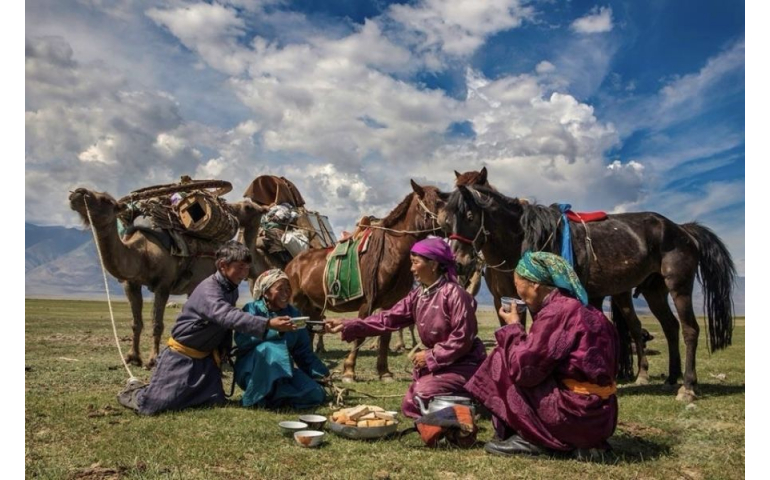MONGOL NOMAD MIGRATION RECOGNIZED AS INTANGIBLE CULTURAL HERITAGE OF HUMANITY
Mongol nomad migration and its associated practices have been added to the Representative List of the Intangible Cultural Heritage of Humanity of the United Nations Educational, Scientific and Cultural Organization (UNESCO). At the 19th Session of the Intergovernmental Committee for the Safeguarding of the Intangible Cultural Heritage, held on 2-6 December 2024, in Asuncion, the capital city of Paraguay, the decision was unanimously approved. It is the 16th heritage of Mongolia, inscribed on the UNESCO List of the Intangible Cultural Heritage of Humanity.
The Intergovernmental Committee and Evaluation Committee of UNESCO’s Convention for the Safeguarding of Intangible Cultural Heritage have officially recognized and endorsed the inclusion of the “Mongolian Nomadic Ritual Practices” in the cultural heritage of humanity. These practices, developed and passed down through generations by the nomadic Mongolians over thousands of years in harmony with nature, climate, lifestyle, and livestock characteristics, contribute significantly to the sustainability of human existence, environmental stability, food security, health, social unity, and inclusive economic development.
“Mongolian nomadic culture is a way of life that is rooted in the interdependence between pastures, livestock, and herders. To ensure the well-being of the livestock and the sustainability of the herders, proper pasture use is crucial. The families move between pastures, which are categorized based on factors such as the amount of grass available, geography, climate, and season. This approach has been passed down for generations as a means of giving the earth time to rejuvenate. The head of the household selects the date to relocate, and rituals are performed by all family members to prepare for the migration. This includes cleaning the area, disposing of waste, building carts, and preparing the animals. During the migration phase, the wife dresses in her finest clothes and leads the way to show her gratitude and respect for Mother Nature. Children start learning crucial skills for their nomadic lifestyle from a young age. This includes taking care of and selecting livestock, learning migration routes, and assembling and disassembling gers. Every member of the family participates. The customs and routines of this nomadic culture facilitate communication and cultivate a strong sense of community amongst the herders. They also promote environmental stewardship, knowledge dissemination, and peaceful coexistence,” according to a publication on the UNESCO website.
The "Mongol nomadic practices" encompass a complex system of traditional knowledge, including selecting pasture lands and choosing the day for migration, packing up and moving, cleaning campsites, adapting to new settlements, managing grazing resources, adjusting the structure and size of livestock according to the grazing land’s capacity, the presence of wild animals, and plant distribution, all while ensuring the protection of the environment. This knowledge has been passed down and integrated into the daily practices of nomads for generations.
Emerging from the interconnectedness of humans, nature, and livestock, this knowledge has been passed down through the ages while maintaining respect and care for the surrounding environment and livestock. Today, those who inherit and practice this traditional knowledge still migrate with camels in the Altai Mountains, with yaks in the Khangai Mountains, with camels in the Gobi Desert, with camels and carts on the steppe, and with reindeer in the taiga region.
The value of the cultural heritage of the Mongols is globally recognized, and its richness continues to expand and develop, as reported by the Ministry of Culture, Sports, Tourism, and Youth of Mongolia.
Source: Montsame


